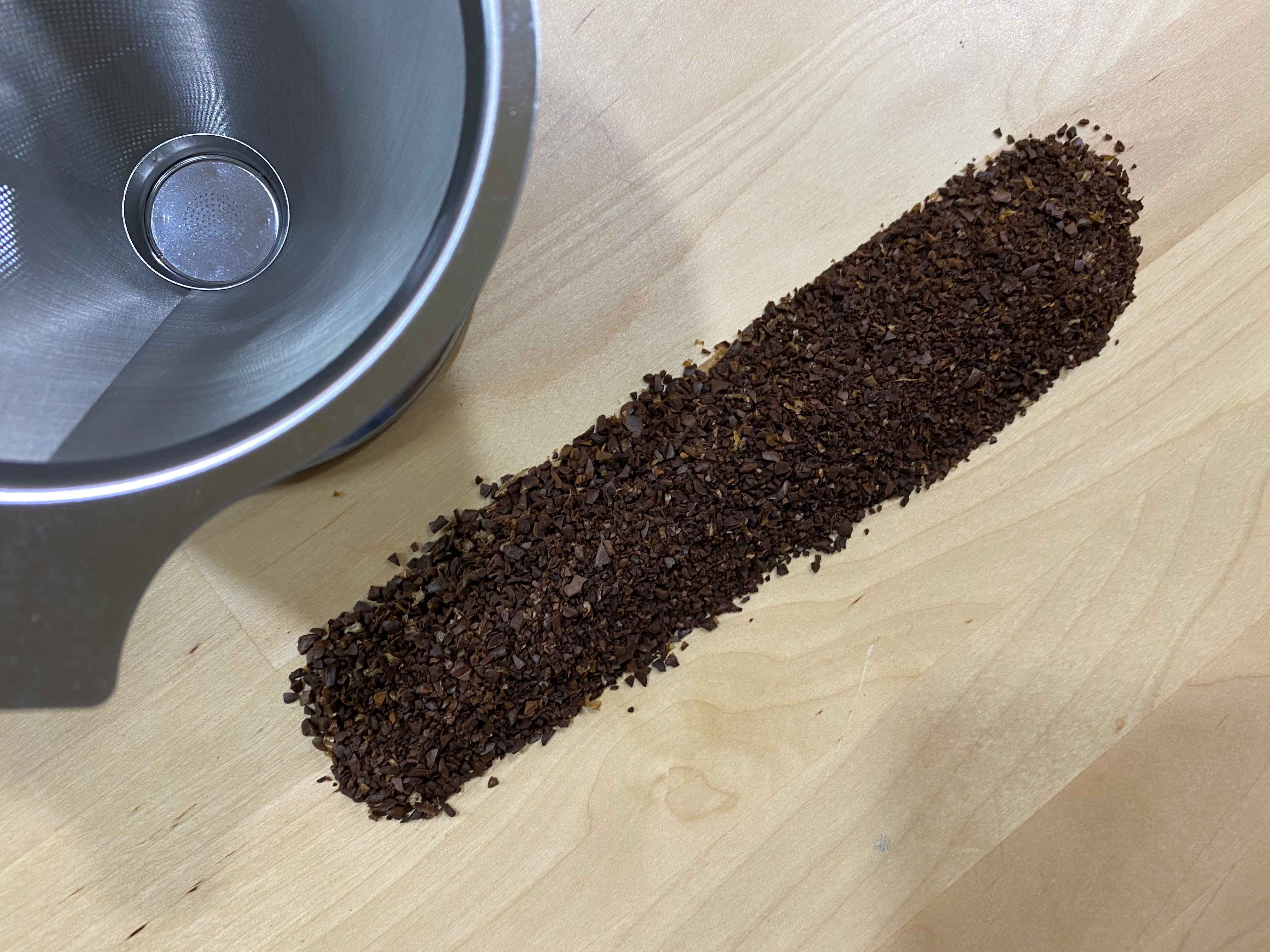You don’t need to use a French press or espresso maker for long before you realize pre-ground coffee isn’t the pinnacle of quality.
We’ve all been there. It can take a while before you’re willing to admit the coffee nerds were right; it’s always better to be the master of your own grind.
Firstly, there’s nothing wrong with enjoying pre-ground bag of coffee.
If that’s what you prefer, that’s fine. I’m not trying to make you feel bad about it.
I will say pre-ground coffees can’t provide the same quality and deep, complex flavor profiles as freshly ground beans.
That’s just the truth of it.
So, if you want to develop your skills as a coffee taster or just learn about coffee and what makes it special, you will need a grinder and a press (or brewer).
Just to clarify, all coffee pressers are brewers but not all coffee brewers are pressers.
Whichever option you use, the device or machine needs to start with ground beans and produce a cup of coffee.
In this article, we’re starting at the very beginning with the grinder.
Like brewers, coffee grinders come in a wide variety of shapes and sizes.
The majority have adjustable grind settings so you can match the French press grind size to the bean’s specific needs (small, medium, large, etc).
Why get the grind right?
It may sound like a superficial detail but grind size has a big impact on how your coffee behaves during the brewing process.
If you tend to flirt around and try lots of different coffee varieties and bean sizes, you should also be adjusting the settings on your grinder fairly regularly.
I promise you there’s always a dream combination – coffee variety + grind size + coffee brewer – waiting to be found.
For those who aren’t completely obsessed with coffee, it’s not worth the time trying to find these combinations. We are though. So, let’s get started.
The first thing to know is that grind size directly affects brewing time.
The larger the grounds, the longer the brewing time. This will never change regardless of the coffee brewer being used.
The trick is finding out whether your grounds need a fast brew, a slow brew or a brew somewhere in between.
The Grind Size Lingo
Curiously enough, there isn’t a lot of useful terminology for discussing grind size.
There is jargon and lingo aplenty for everything else, but relatively few words to describe coffee grounds. So, I’m going to stick with simple analogies.
- Coarse grounds refers to the largest of grounds. To the eye, coarse grinds are similar to nib sugar or the thickest kosher salt. You can clearly see each ground and there’s a very rough, chunky consistency.
- Medium ground has smaller particles than coarsely ground coffee. They appear more like coarse sand. The coffee is rough to the touch and you can see it isn’t homogenous like fine sand. However, the particles are very small.
- Fine grounds has much the same consistency as standard table salt. The particles are homogenous and could be sprinkled as easily as salt.
- Super-Fine grounds are the most delicate of all with the smallest of particles. They appear like the softest, finest sand. You can no longer make out individual particles.
These four examples are the ones I deem most important for coffee tasting.
There are additional grades of consistency (such as ‘medium-fine’) in between these grind sizes.
You can always investigate in more detail later. For now, we’ll stick with four simple sizes.
Use Coarse Grounds for the FRENCH PRESS
The French press is probably the most common at home coffee brewer.
These brewing devices are affordable, come in lots of different sizes and don’t need any sort of power or fancy gadgets.
They are entirely self-contained and easy to use.
French press brewing is a type of immersion brewing.
It immerses the grounds in hot water and lets them soak in it for a few minutes.
It’s not an instant method.
Wait for the water to penetrate into the coffee grounds before you pour. For this particular brewing method, the coarser the grounds, the better the coffee.
In fact, the coffee grounds need to be coarse so they don’t come through the mesh filter on the lid of the brewer.

Use Medium Grounds for the POUR-OVER BREWER
Pour-over brewers are altogether more complex than basic French pressers.
They come in even more varieties and can be used in a handful of different ways.
The only way to truly determine the optimal grind size for your brewer is to experiment until you find a combination that works for you.
I will give you some general advice to get you started.
For the vast majority of pour-over brewers, you need a medium grind.
The grounds should be coarse enough to create resistance as the water gravity drips through them.
Too coarse and the water will simply tumble around them without interacting.
Too fine and they’ll clog the filter and create an agonizingly slow, bitter brew.
This advice is generally right though but it lacks some specificity.
For example, my pour-over brewer at home drains a little more slowly than some other brewers.
To counteract it – and prevent my coffee from being over-brewed – I use a medium grind that is closer to coarse grounds than fine.
I suggest you take a close look at your brewer and do some testing to determine how fast or slow it drains. Then, adjust your grind size accordingly.

Use Coarse Grounds for the IMMERSION COLD BREWER
Immersion cold brewing is normally done in a standard French press.
The practical steps are the same as for regular immersion brewing. However, the grounds steep for much, much longer and only cold water is used.
Not everybody is a fan of cold coffee but, if you do like it, this is the best way to make it.
Standard French press rules apply.
Use coarse grounds for a steady brew speed.
Cold immersion coffee takes between twelve and twenty four hours to brew so leave the press in the fridge until it’s ready for pouring.
The combo of coarse grinds, cold water and an extended brewing period should result in a coffee that is rich and well balanced.
Use Medium-Fine Grounds for a DRIP COLD BREWER
Drip cold brewing is, again, almost identical to standard ‘drip’ pour-over brews except for the fact the coffee is cold.
The best grind size for this is anywhere close to medium-fine. So, coarser than a fine grind but not too much.
Cold coffee is brewed for much, much longer than hot drip pour coffee. Plus, pour-over (or drip) coffee takes even longer to brew than immersion brewed coffee regardless of whether it’s hot or cold.
Using finer coffee grounds counteracts this somewhat and helps to reduce bitterness due to over-extraction.
If the grounds are too coarse, the water will flow around them and you’ll end up with a thin liquid that barely tastes of coffee.
Too fine and the grounds will obstruct filtration and leave you with an unpleasant tasting mess.
Use Any Grind Size for AEROPRESS BREWER
AeroPress brewers are interesting devices.
These multifunctional coffee makers can be used in a number of ways.
They’re also compatible with nearly all types of grind. For instance, AeroPress brewers make standard hot coffee from coarse grinds in the same way a French press does.
They can also use fine grounds to produce espresso style shots of intensely strong coffee.
Or, you can make a fresh coffee that’s somewhere in between.
There isn’t really a perfect grind size for the AeroPress because it depends on how you use it.
My favorite method requires a medium-fine grind. The grounds are left to soak for around two minutes. Then, I plunge the coffee out.
Some professional roasters use the following guidelines for the AeroPress brewer.
Medium coarse grounds are steeped for three minutes.
Fine grounds are steeped for just two.
Experiment with your own home brewer to find the perfect combination for you. Don’t forget, coarse grounds get extracted more slowly than fine ones regardless of the brewing method.
The only grind I’d deem unsuitable for the AeroPress brewer is anything smaller than fine. Super-fine grounds are near impossible to plunge out of the liquid coffee.
Use Fine Grounds for MOKA POT BREWERS
Moka pots are those funny looking brewers that sit directly on the stove.
They’re great for camping trips because you boil the water and brew the coffee at the same time.
Moka pots are wildly popular in Italy and becoming more prevalent in other parts of the world.
They function by pushing steam through the coffee grounds and up into a container where it condenses and becomes (coffee) liquid again.
The best grind size for Moka pots and similar stovetop brewers is fine.
If overly coarse, the steam will pass through too quickly to extract any of the coffee.
Fine grounds facilitate the extraction of oils and soluble materials. I recommend you use only fine grounds.
Super-fine coffee is going to block the pot’s filters.
In any other circumstance, the only consequence of this is unpleasant coffee.
With a Moka pot, you run the risk of having coffee explode everywhere. If the pressure can’t pass through the coffee, it’s going to come out another way.
Trust me, you don’t want to know what this looks like…or how long it takes to clean up.
Use Super-fine Grounds for ESPRESSO BREWERS
The one type of coffee brewer that always needs super-fine grounds is the home espresso maker.
Espresso is made in just twenty to thirty seconds. It’s fast brewing and intensely powerful. To produce coffee with such a strong concentration, hot water is pushed through compacted grounds at top speed.
The espresso method doesn’t work with anything but the finest, most delicate coffee grounds.



